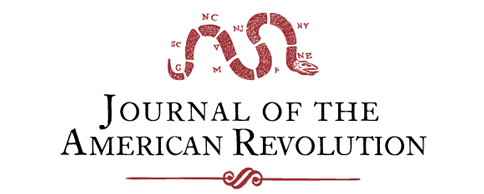As part of the British empire, none of the thirteen American colonies maintained a standing army of the sort Great Britain and the other European powers had. American colonists looked to their own militia and when necessary, the British army and navy, for their defense.
The French and Indian War of the 1750s and 1760s, however, prompted a number of colonies to raise provincial troops. Whereas militia service involved occasional musters, drills, and mobilizations for short stints of service, the new provincial troops were required to serve for a year or more. Col. George Washington of Virginia commanded such troops as did Col. Hugh Mercer of Pennsylvania, and because of the length of their enlistments their troops had more in common with British redcoats than they did with colonial militia. Unlike British regulars, however, these provincial troops knew that as soon as the conflict was over, their units would be disbanded.
When the long war concluded in Britain’s favor in 1763, the colonial provincial troops were indeed disbanded and, along with the militia in service, sent home. Over seven thousand British redcoats remained in North America under the auspices of protecting the colonists.[1] The number fell to just over six thousand troops by 1773, distributed amongst thirteen battalions.[2] The bulk of these troops guarded the valuable British sugar islands in the Caribbean, asserted British control of Canada, and manned forts on the frontier of the colonies as well as in Florida. Small contingents of British troops were also in Boston, New York City, Philadelphia, and New Jersey.[3] The presence of these troops and particularly the cost of maintaining all of them, a cost that the British parliament expected the colonists to bear through new taxes that they imposed in the 1760s, alarmed colonial leaders. They argued that Parliament had no right to directly tax them for any reason and that British troops were not needed in the thirteen colonies because the colonial militia was more than adequate to defend the colonies now that France had been removed from Canada.
Such arguments were ignored by British leaders and the dispute over “Taxation Without Representation” simmered for a decade. For most of that time, the colonists focused on political and economic pressure to convince Parliament to end its efforts to tax them. Armed conflict with Great Britain was unthinkable to most colonists . . . until suddenly it wasn’t.
That point came in 1774 when thousands of additional British troops occupied Boston to punish the city and the entire colony of Massachusetts for the Boston Tea party. Parliament’s Coercive Acts— decried as Intolerable by the colonists—triggered a strong response in America. Initially, economic measures were embraced by the First Continental Congress, but by the fall of 1774, calls to better organize and prepare the militia intensified.
Such action was necessary because the militia of most colonies had degraded over the decade since the end of the French and Indian War. Service in the militia was still required in all the colonies except Pennsylvania, which was dominated by pacifist Quakers, but the musters and drill were limited to just a handful a year and were as much an occasion to socialize than to hone military skills.[4]
The age of service in the militia varied per colony, ranging from sixteen to twenty-one as a minimum age and forty-five to sixty as a maximum age. Exclusions were granted to certain groups, such as government office holders, the clergy, and in several colonies, Quakers. Free men of color were typically included in the militia, but prohibited from being armed.[5]
A requirement to provide oneself with a musket or rifle, ammunition and other accoutrements, was included in most colonies although enforcement of this was inconsistent. A handful of musters to train the militia were scheduled over the course of a year, and the drill used among the militia troops varied from company to company. Prior to 1774, most militia in New England trained under some variation of the Plan of Discipline, Composed for the Use of the Militia of the County of Norfolk, a book written for a British militia regiment in 1757 and widely reprinted in the colonies.[6] Other companies used the British army drill manual established in 1764.[7]
In an age dominated by bayonets affixed to smoothbore muskets with an effective range of just one hundred yards, discipline and order on the battlefield were crucial to win the day. Driving the enemy from the field was the goal, and few were better at it than the professional British army. The militia of the American colonies were a far cry from British regulars and the very thought of hostilities between the colonists and British troops was inconceivable to most, but an incident outside of Boston in early September demonstrated that the militia of New England were willing to confront British redcoats, if necessary.
The incident that sparked this near confrontation in 1774 was the British removal of several hundred casks of gunpowder from a powder magazine outside of Cambridge. Gen. Thomas Gage, the commander of British forces in Boston and military governor of Massachusetts, seized this gunpowder, which as governor he was entitled to do, to prevent its use against his troops should the situation in Massachusetts deteriorate into violence. The sudden removal of the gunpowder upset many in Massachusetts, but it was reports that British troops had fired upon Boston and killed many inhabitants that motivated thousands of men from throughout New England to take up their arms and march. When it was learned that such reports were false, and that Boston and its residents were fine, the militia returned to their homes. The entire affair suggested, however, that perhaps hostility between the colonists and redcoats was not as inconceivable as people thought.
A convention of Worcester County representatives, just two weeks after the powder’s seizure, called for a new militia system to include a body of minutemen from each community who would be, “ready to act at a minute’s warning.”[8] Several weeks after that, a newly formed Massachusetts Provincial Congress, meeting in Salem, recommended a series of measures, including those endorsed by Worcester County, to better prepare the entire colony’s militia for possible conflict. The Congress authorized the purchase of twenty cannons, five thousand muskets and bayonets, seventy-five thousand musket flints, one thousand barrels of gunpowder, five tons of lead ball (for the muskets), and twenty tons of round and grape shot (for the cannons).[9]
The Provincial Congress called on townsfolk throughout Massachusetts to better organize themselves into militia companies (called alarm companies) and enlist at least one-quarter of their men into minute companies, “who shall equip and hold themselves in readiness, on the shortest notice . . . to march to the place of rendezvous.”[10] The Congress also called for these alarm and minute companies to be organized into regiments.
The other New England colonies were slower to act, but not by much. Reports from London of a British embargo of arms and ammunition to the colonies alarmed everyone in December and prompted colonists in both New Hampshire and Rhode Island to seize gunpowder, weapons and ordnance from two forts within days of the news. These colonies, as well as Connecticut, joined Massachusetts in preparing for conflict. An unidentified colonist from Massachusetts described the militant spirit that had developed throughout New England by January 1775.
We have neither Legislators, nor Magistrates, nor Executive Officers. We have no officers but [militia] ones. Of these we have a multitude, chosen by the people, and exercising them with more authority and spirit than ever any did who had commissions from a Governor . . . The neighbouring Colonies in New-Hampshire, Rode-Island, and Connecticut, are arming and training themselves with great spirit.[11]
The Reverend Ezra Stiles of Rhode Island confirmed this military ardor in New England in March 1775.
Military Exercise universal thro New Engld. Connecticut Assembly about training & equipping Ten Thousd Men for the Field—these to be Men from 20 to 30 [years old] & not above. But Everywhere thro the Country Men [aged] 60 take their places in the Ranks & assiduously learn the Exercise.[12]
Few of the colonies outside of New England made such militant preparations as those to the north. Several counties in Virginia formed independent militia companies in 1774 with the stated purpose of enhancing their military skills, but most Virginians took no such action until the spring of 1775, when the Second Virginia Convention recommended that each county form a company of volunteers to place Virginia in a better state of defense. This decision was the result of Patrick Henry’s famous, “Liberty or Death” speech on March 23, 1775 in Richmond. Prior to Henry’s resolution, most Virginians seemed content to rely on the economic measures passed by the Continental Congress in October of 1774 to pressure Parliament to rescind the Intolerable Acts.
South Carolina’s leaders went further than Virginia, recommending in January 1775 that its inhabitants, “be diligently attentive in learning the use of arms; and that their officers be required to train and exercise them at least once a fortnight” (every two weeks).[13]
Of all the colonies outside of New England, Maryland embraced the most militaristic response to British colonial policies and actions in 1774. At a convention in Annapolis in December assembled to endorse the measures taken by the Continental Congress, Maryland’s leaders called for all male inhabitants between the ages of sixteen to fifty to, “form themselves into companies of sixty-eight men . . . use their utmost endeavors to make themselves masters of the military exercise . . . and be in readiness to act on an emergency.”[14]
There was one other group of colonists outside of New England who signaled their readiness to fight the British army, if necessary. Coming off a successful military expedition against the Shawnee in the fall of 1774, hundreds of frontiersmen from Virginia, skilled in the use of rifled weapons, hardened by a four-month campaign in the wilderness against the Shawnee, and aware of the rising tension in Boston, expressed their eagerness to defend the rights of all colonists. Their declaration in early November at Fort Gowers on the Ohio River provided some insight into the type of soldiers they were.
That we are a respectable Body is certain, when it is considered that we can live Weeks without Bread or Salt, that we can sleep in the open Air without any Covering but that of the Canopy of Heavan, and that our Men can march and shoot with any in the known World.[15]
Their experience was not typical for most militia in British America in 1774. The tactics used against the Shawnee in the wilderness were not necessarily the best tactics to use away from the frontier against the British. Training in linear warfare and discipline on the battlefield were crucial if the colonists were ever to challenge the British army, and most of the militia in the colonies were in need of both as the impending conflict with Great Britain approached. They would soon receive a crash course in response to events in the Massachusetts countryside in April 1775.
[1] Peter D.G. Thomas, “The Cost of the British Army in North America, 1763-1775,” The William & Mary Quarterly, Vol. 45, No. 3 (July 1988), 512.
[2] Ibid.
[3] R.C. Simmons and P.D.G. Thomas, ed., “An Account of Extraordinary Services incurred and paid by . . . Richard Rigby, Paymaster General of His Majesty’s Forces between 22 April 1774 and 8 March 1775,” Proceedings and Debates of the British Parliaments Respecting North America, 1754-1783, Vol. 6 (White Plains, NY: Kraus Internation Publications, 1987), 12-15.
[4] James Biser Whisker, The American Colonial Militia: Introduction to the American Militia (Lewiston, NY: Edwin Mellen Press, 1997), 1:77-78.
[5]William Waller Hening ed., “An Act for the better Regulation of the Militia, 1738,” Statutes of Virginia: Being a Collection of all the Laws of Virginia . . ., Vol. 5 (Richmond, VA: Franklin Press-W.W. Gray, 1819), 16-17, and Hening, ed., “An Act for the better Regulation of the Militia, 1766,” Statutes of Virginia, Vol. 8, 244, and Acts and Resolves of the Province of Massachusetts Bay, 1 (Boston: Wright and Potter, Printers to the State, 1869), 128.
[6] Whisker, The American Colonial Militia, 1:79.
[7] Ibid.
[8] John R. Galvin, The Minute Men: The First Fight: Myths and Realities of the American Revolution (Washington, D.C.: Potomac Books, Inc., 1989), 51-52.
[9] William Lincoln, ed., “Proceedings of October 25, 1774,” Journals of the Provincial Congress of Massachusetts, (Boston: Dutton and Wentworth, Printers to the State, 1838), 30.
[10] Lincoln, ed., “Proceedings of October 26, 1774,” 33.
[11] Peter Force, ed., “Extract of a Letter from a Gentleman in Massachusetts to his Friend in London, dated January 21, 1775,” American Archives, Fourth Series, 1:1167-68.
[12] Franklin B. Dexter, ed., “March 14, 1774,” in Literary Diary of Ezra Stiles (New York: Charles Scribner’s Sons, 1901), 1:525.
[13] William Moultrie, Memoirs of the American Revolution (New York: David Longworth, 1802), 1:55.
[14] Virginia Gazette (Purdie and Dixon), December 29, 1774.
[15] Virginia Gazette (Purdie and Dixon), December 22, 1774.





Recent Articles
The Evolution of the American Declaration of Independence
The Deadliest Seconds of the War
Entangled Alliances: Racialized Freedom and Atlantic Diplomacy During the American Revolution
Recent Comments
"The Deadliest Seconds of..."
A very good article. Nicely done. I noticed with interest that the...
"The Deadliest Seconds of..."
Since the main purpose for the ships of the Continental Navy was...
"A Curious Agreement Among..."
Mr. Ness, I would love to have a copy of that list....